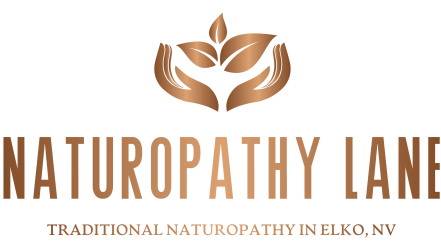Calendula officinalis, commonly known as marigold, is a beautiful flowering plant in the daisy family (Asteraceae) that has been utilized for centuries as a natural and potent herbal remedy. Native to southern Europe and the Mediterranean, Calendula’s healing properties have made it a beloved ingredient in traditional medicine systems across the globe. This comprehensive guide will delve into the active constituents found in Calendula, their methods of action, and the numerous benefits this versatile plant offers for our health and wellness.
Calendula is rich in various active constituents that contribute to its therapeutic properties. These include flavonoids such as quercetin, rutin, and apigenin, carotenoids like lutein and zeaxanthin, essential oils, and saponins. Let us explore these compounds and their roles in Calendula’s healing potential. Flavonoids: Flavonoids are a class of plant pigments that exhibit antioxidant, anti-inflammatory, and immune-boosting properties. In Calendula, the primary flavonoids are quercetin, rutin, and apigenin. These compounds help reduce inflammation, neutralize free radicals, and protect cells from damage caused by oxidative stress. Carotenoids: Carotenoids are a group of fat-soluble pigments that act as powerful antioxidants in the body. In Calendula, lutein and zeaxanthin are the most abundant carotenoids. These compounds have been shown to support eye health by protecting the retina from damage caused by blue light and oxidative stress. Essential Oils: Calendula essential oil is extracted from the flowers of the plant and contains various components such as α-pinene, β-pinene, limonene, and geraniol. These oils contribute to Calendula’s antimicrobial, anti-inflammatory, and analgesic properties. Saponins: Saponins are a group of compounds that possess numerous therapeutic benefits, including immune system support and hormone regulation. In Calendula, saponins have been shown to stimulate the production of white blood cells, helping to fight off infections and promote rapid healing.
Now that we understand the active constituents found in Calendula let us explore the various health benefits this versatile plant offers:
1. Skin Health: Calendula’s anti-inflammatory, antimicrobial, and antioxidant properties make it an excellent remedy for skin conditions such as eczema, psoriasis, acne, burns, and wounds. When applied topically, Calendula helps reduce inflammation, speed up wound healing, and protect the skin from further damage caused by bacteria, viruses, and environmental factors.
2. Immune System Support: Calendula’s flavonoids and saponins help stimulate the immune system, fighting off infections and promoting rapid healing of tissues. This makes it an ideal natural medicine for boosting overall immunity and preventing illnesses such as colds and flu.
3. Eye Health: The carotenoids lutein and zeaxanthin found in Calendula help protect the retina from damage caused by blue light and oxidative stress, supporting eye health and potentially reducing the risk of age-related macular degeneration (AMD) and cataracts.
4. Inflammatory Conditions: Calendula’s anti-inflammatory properties make it an effective natural remedy for treating chronic inflammatory conditions such as arthritis, gout, and colitis. By reducing oxidative stress and inflammation in the body, Calendula helps alleviate pain, swelling, and joint stiffness associated with these conditions.
5. Wound Healing: In addition to its topical application for skin conditions, Calendula can also be taken orally to promote rapid wound healing. The flavonoids, saponins, and essential oils found in Calendula help reduce inflammation, boost the immune system, and protect cells from damage caused by free radicals.
6. Digestive Health: This herb has been shown to have mild laxative properties, making it an effective natural remedy for constipation and other digestive issues. Additionally, its anti-inflammatory properties can help alleviate symptoms of irritable bowel syndrome (IBS) and Crohn’s disease.
7. Respiratory Health: Calendula’s antimicrobial and anti-inflammatory properties make it an effective natural remedy for treating respiratory infections such as bronchitis, sinusitis, and sore throats. Its essential oils help fight off bacteria and viruses that cause these infections, while its flavonoids reduce inflammation and alleviate symptoms like coughing and congestion.
8. Menstrual Discomfort: Calendula’s analgesic properties can help relieve menstrual cramps and discomfort. Its anti-inflammatory effects can also help reduce swelling and discomfort associated with hormonal imbalances during menstruation.
Calendula is available in various forms such as teas, tinctures, ointments, and essential oils. When consuming Calendula orally, it’s important to remember that high doses may cause gastrointestinal upset, so always consult a healthcare professional before starting any new herbal remedy regimen.
In conclusion, Calendula is an incredibly versatile and powerful natural medicine with numerous health benefits for our bodies. From supporting skin health and immune system function to treating inflammatory conditions and promoting rapid wound healing, the active constituents found in Calendula offer a myriad of therapeutic potential. By incorporating this beautiful flower into your daily routine, you can harness its multifaceted healing power and enjoy improved health and wellness. So why wait? Embrace the benefits of Calendula today!
Further Reading on Natural Medicine:
Herbs: Cloves Lily of the Valley Mullein Uva Ursi
Pages: Modalities
Ready to feel better?
Book a secure video visit or browse common questions.



